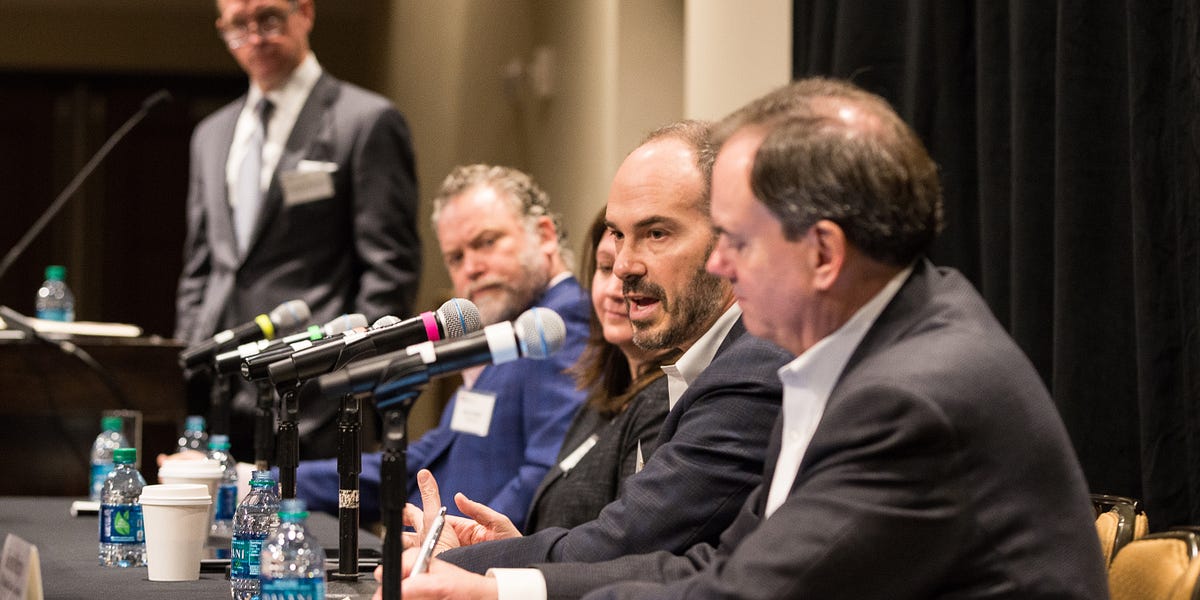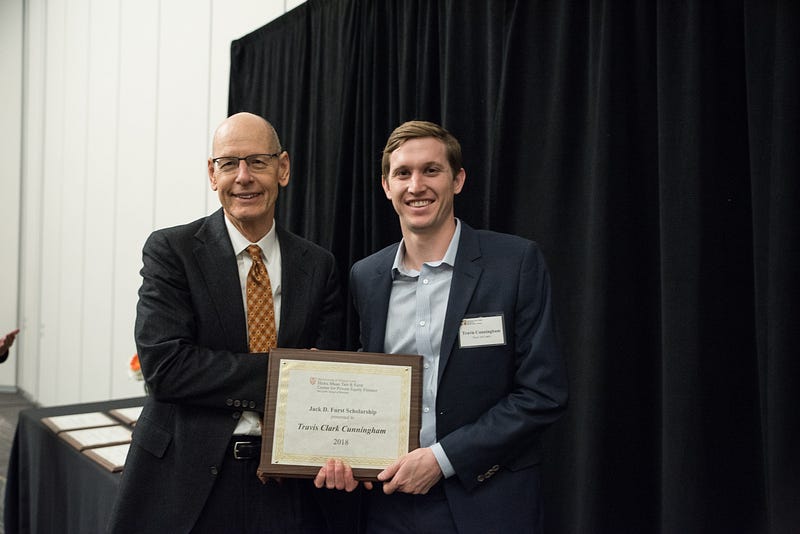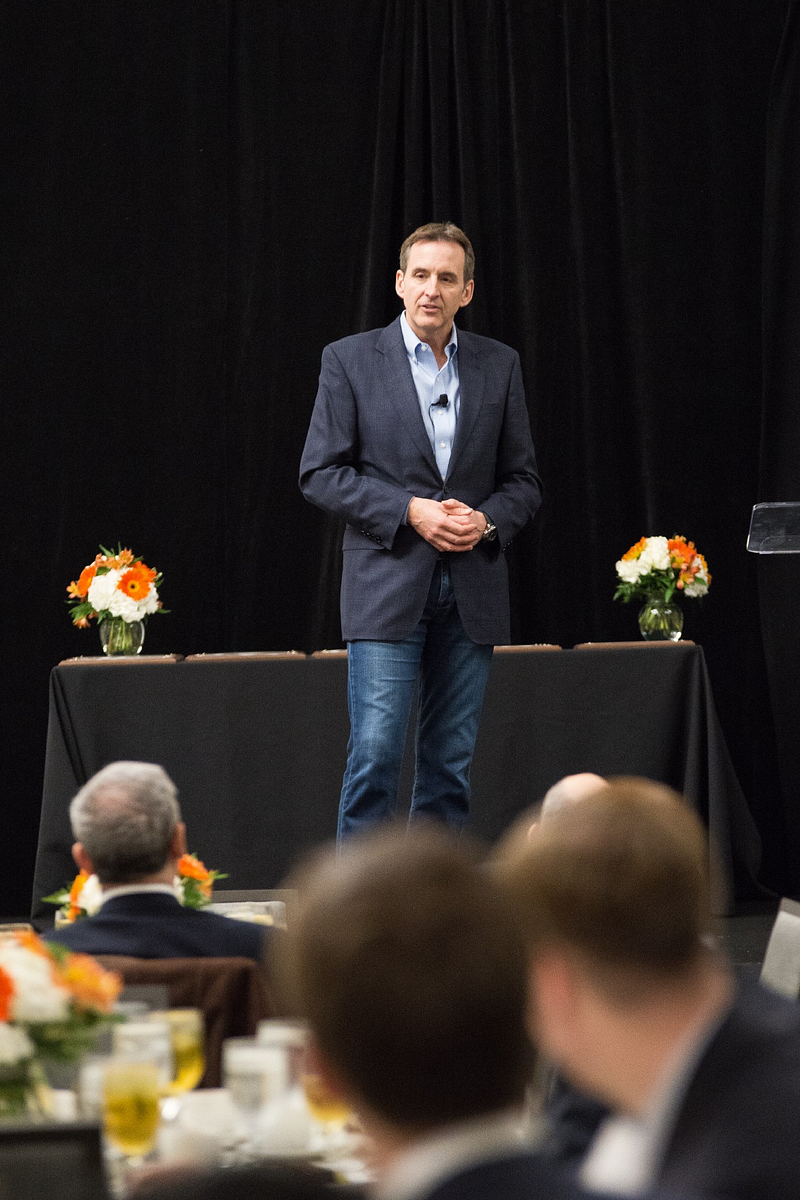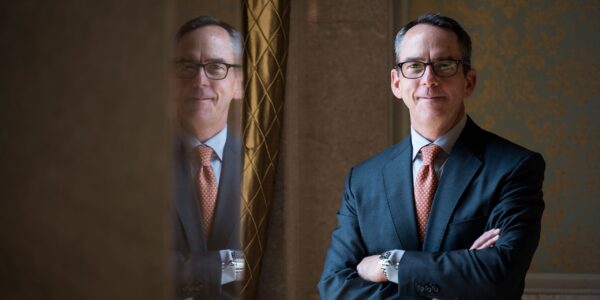Investing in Private Equity Education
How the Hicks, Muse, Tate, and Furst Center for Private Equity Finance ushered in a new era at McCombs.
By Judie Kinonen

Nearly 20 years ago, when the partners of the Dallas-based leveraged buyout firm of Hicks, Muse, Tate, and Furst (HMTF) decided to endow a Center for Private Equity Finance at McCombs, they had a strong sense that the emerging alternative investment class of private equity was poised for significant growth. They wanted to prime the pump for growth in this market in the state of Texas, as well as more broadly.
Since then, the rate of growth in the private equity markets has surprised even them. In the five years leading up to the establishment of the HMTF Center for Private Equity Finance in 2000, worldwide private equity fundraising totaled about $375 billion, says McCombs HMTF Center Director Bob Parrino. That number was roughly $2.5 trillion for the five years ending in 2018. The level of private equity investment activity in Texas has also grown very rapidly.
Jack Furst, MBA ’84, recalls the partners’ thought process when they established the center in 2000. “When we started the HMTF Private Equity Center, private equity as an asset class was in its early stages of development.
“We wanted business students and future investors to become acquainted with and exposed to the evolution of the private equity space,” says Furst.
Education in private equity was in its infancy in 2000. “By founding the center, we wanted to be a part of introducing this whole new vocabulary,” says partner Charles Tate, BBA ’68.
Indeed, the impact of the HMTF Center on the education of McCombs students and outside interest in the center have steadily increased over the last 20 years. The center has enabled the development of private equity courses and provided academic oversight and financial support for the McCombs Venture Fellows Program. The center also awards scholarships, brings in high-profile speakers, and hosts private equity conferences and forums.
The external activities of the HMTF Center reflect a key objective of the HMTF partners when they endowed the center — to help strengthen and raise the profile of private equity in the state of Texas.
Boosting this market in his home state was, in addition to offering educational opportunities for students, top-of-mind for HMTF’s founding partner, Tom Hicks, BBA ’69, when he presented his partners with the idea of starting a center at McCombs.

“Texas has always been a state with investors willing to take a risk to do deals, because of our oil and gas industry,” Hicks says. “But back when we started making deals, private equity just wasn’t very institutional here.”
Partner John Muse agrees. “We saw that this was an emerging category of commerce and finance, and it was an underrepresented dimension in the state.” In fact, Charles Tate worked out of a large satellite office in New York City, because “that’s where the deal flow was,” he says, noting that Texas was not well known or respected for private equity back then.
The trends in private equity over the last 20 years are likely to continue as both the private and public equity markets continue to evolve. There is an ongoing dramatic shift in where growing firms are raising new equity capital. Even very large firms are now able to fund their capital needs in the private markets.
“A lot of companies are choosing not to go public,” Parrino says. “Uber is just now talking about it. A company that size would never have gotten to the stage it’s at now 10 or 15 years ago using only private money.”
In 2018 there were approximately 300 private companies with a market value of $1 billion or more, up from approximately 40 such companies five years earlier. In contrast, the number of companies listed on U.S. stock exchanges declined from more than 7,000 in 1997 to about 3,600 in 2017.
Even more exciting is the growth of private equity in Texas, says Tate. “One of the big changes is when I graduated from The University of Texas, I felt I had to go to someplace else to find an opportunity that I thought would lead to something interesting,” he says. “That’s all changed. Now, people all over the world recognize that Texas, and in particular Austin, is where they want to start their careers.”

That means more job opportunities close to home, Parrino says. He says graduates historically entered the field by first taking a job in investment banking — “to learn the finance of these transactions” — then shifting into a private equity firm after a few years. “Today, there are a lot of opportunities for students to get jobs and there are more career paths available to our students in private equity,” Parrino says. “The vision of the center hasn’t changed, but the opportunities available to students have changed quite a bit over the last 20 years.”
There has never been a better time to enter this market — especially in Texas, says Tom Hicks. “There are lots of private equity firms here now, and I think that growth will continue.”
“The center is continually adding resources and using their own entrepreneurial vision about how to evolve,” Hicks says. “I feel like we were the ones that planted the seeds and fertilized them, and got it going. Now it’s time to let it just grow in its own organic way.”
Hicks, Muse, Tate, and Furst Center for Private Equity Finance Key Activities
Private Equity Courses: McCombs now offers MBA courses in private equity and new venture finance and BBA courses in entrepreneurial finance and mergers and acquisitions.
Student interest is booming: More than 40 percent of the second-year McCombs MBA students took the private equity elective course this past fall semester. In contrast, the number of MBA students concentrating in finance is only about 35 percent. “So, we’re getting some non-finance students who understand how important this market is today,” says Parrino.
Venture Fellows Program: The center also provides academic oversight and financial support to the McCombs Venture Fellows program, through which 16 to 17 MBA students from each class participate in internships with private equity (including both venture capital and buyout) firms during the spring of their first year and fall of their second year.
High-Profile Speakers: In addition to for-credit courses, the HMTF Center supports activities that bring high-profile visiting speakers to campus to meet with students, such as Robert F. Smith, CEO of Vista Equity Partners, and General David Petraeus, chairman of the KKR Global Institute.
“The idea is to plant seeds across our programs, both at the MBA and the undergraduate levels, to get more students interested in studying private equity, and to increase our success in placing them in the job market,” Parrino says.
Scholarships: The HMTF Center annually awards scholarships to support top students who are interested in pursuing careers in private equity. Thirteen such scholarships were awarded in each of the last two years, a number that Parrino hopes to increase in the future.
Conferences and Forums: In addition to its academic programs, the center also has an active program aimed at promoting interactions between members of the private equity community and McCombs and helping to raise the profile of the Texas private equity community.
This program includes sponsoring the annual Texas Private Equity Conference, which attracted 300 registrants this year, most of whom were industry professionals such as investors, fund managers, agents, and advisors. It also includes sponsoring the Forum on Corporate Finance, which brings together senior financial executives and academic researchers from top business schools for two days of discussions on current issues in corporate finance.
This article appeared in the spring 2019 issue of McCombs magazine. Click on the link to see the full issue.


